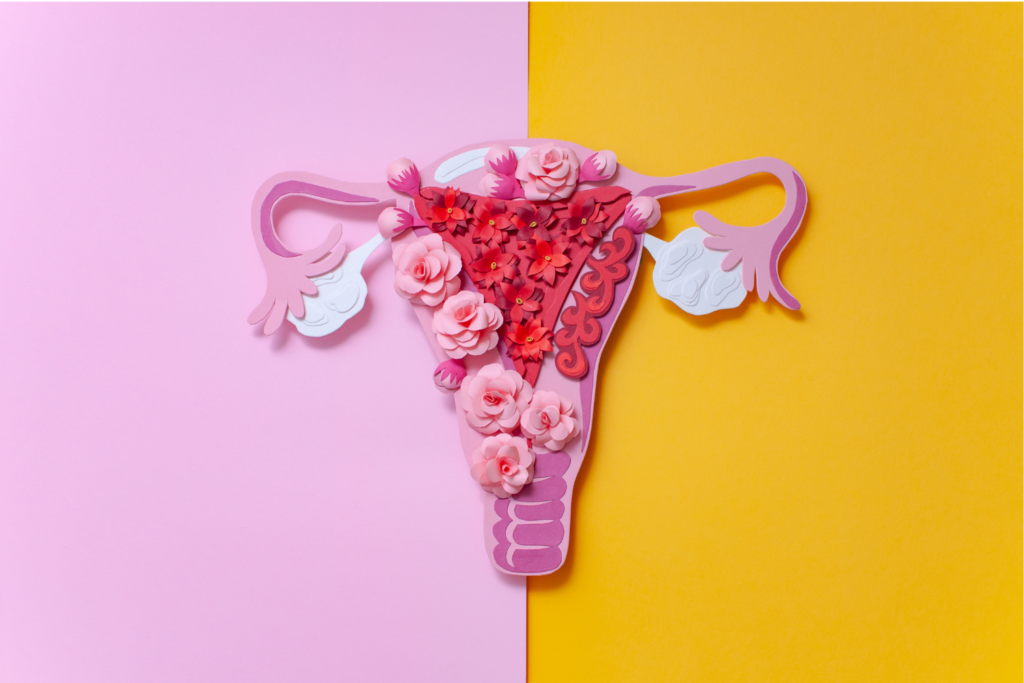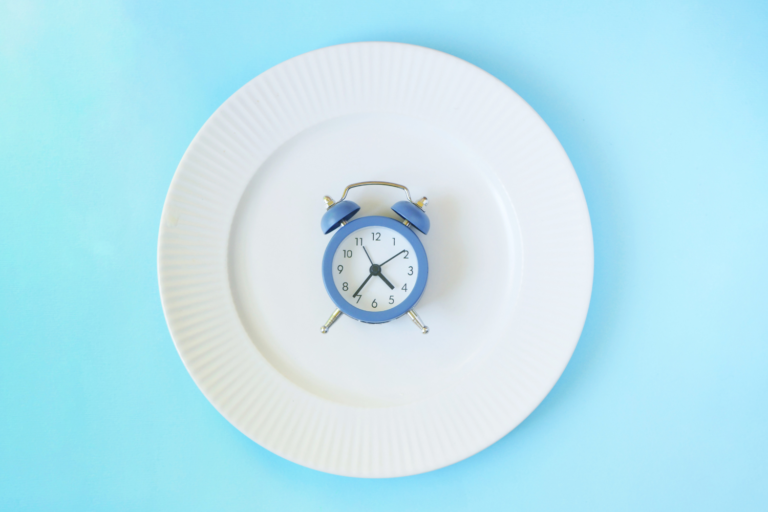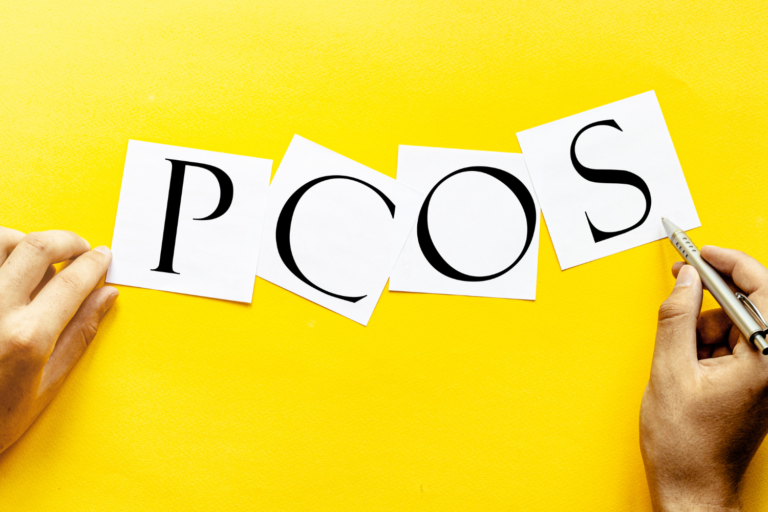Endometriosis is condition that affects approximately 6-15% of the female population. It is primarily diagnosed in women of reproductive age.
It turns out that about 35% of all women seeking infertility treatment clinics have already been diagnosed with endometriosis, suspected of having endometriosis or it is diagnosed during further diagnostic evaluation. In 21% of cases, endometriosis is the primary cause of infertility in couple.
What is this disease?
Endometrium is the mucous membrane of uterine body and under normal conditions, it is located inside the uterine cavity. Each month, it is shed during menstruation and then renewed unless fertilization occurs – at which point this process is halted.
If endometrial tissue is found in places other than uterine cavity, this condition is called ENDOMETRIOSIS.
As it turns out, this tissue can be found almost anywhere in the body. However, endometrial tissue is most commonly found in the fallopian tubes and ovaries, often also in the peritoneal cavity, within the intestines and in cases of a previous cesarean section, even in the surgical scar. This phenomenon is related to the mechanical movement of tissue.
In such locations, the so-called ENDOMETRIOSIS LESIONS form.
What are the symptoms of endometriosis?
Symptoms of endometriosis can vary significantly from woman to woman and depend primarily on the location of endometrial tissue as well as the phase of menstrual cycle the woman is in.
Main symptoms include:
- SEVERE lower abdominal pain
When we talk about severe pain, it is not about mild discomfort in the lower abdomen, which often occurs during menstruation or ovulation. We’re talking about some of the most intense pain described in medical conditions. Good news is that only about 50% of women with advanced endometriosis experience this kind of pain. These pains usually occur during menstruation but can also appear at other stages of menstrual cycle.
This is because endometrial cells outside uterus behave in the same way as those inside uterus, regenerating and shedding every month under the influence of hormones. That’s why unpleasant symptoms like pain are most often observed in premenstrual period, lasting until the end of menstrual bleeding.
- INFERTILITY
When it comes to infertility, it is important to remain calm because not every woman with endometriosis will face this issue. According to research, about 30% of women with endometriosis experience fertility problems. Endometriosis can interfere with fertility in two main ways. First, the presence of adhesions (scar tissue) within the abdominal cavity and reproductive organs often accompanies endometriosis and negatively impacts fertilization and embryo implantation. Second, the endometriosis lesions secrete substances that promote inflammation, which makes fertilization difficult.
Additional symptoms commonly associated with endometriosis include:
- heavy menstrual bleeding
- bowel motility disorders (such as diarrhea or constipation)
- fatigue
- mental health issues, including depression and anxiety – which are largely linked to living with chronic pain
These symptoms vary in intensity, and some women may experience them more severely than others.
Role of proper diet – what to eat with endometriosis?
In prevention and treatment of endometriosis, proper nutrition, supplementation and overall lifestyle play significant roles. Main functions of diet during treatment are:
- reducing ongoing inflammation
- alleviating pain symptoms
- improving estrogen elimination from the body
- helping in the fight against infertility
In case of endometriosis, an ANTI-INFLAMMATORY DIET (e.g., the Mediterranean diet) is especially beneficial.
Why an anti-inflammatory diet?
As previously mentioned, migrating endometrial tissue forms clusters of inflammatory lesions. These lesions are responsible for the development of inflammation throughout the body. Diet, in turn, can influence this process.
There are foods that are either anti-inflammatory or pro-inflammatory. Balance between these foods in diet will determine the overall character of it, which can directly affect the severity of symptoms associated with progression of endometriosis.
Much of this depends on production of prostaglandins by the body in response to inflammatory processes. Prostaglandins are a group of hormones that influence muscle contraction and relaxation, including smooth muscle, such as that in the uterus. In endometriosis, production of pro-inflammatory prostaglandins is increased, leading to uterine contractions that manifest as severe pain during menstruation. Therefore, a pro-inflammatory diet can increase the risk of endometriosis worsening.
By focusing on anti-inflammatory foods, the inflammatory process in the body can be mitigated, leading to reduced symptoms and potentially better management of the condition.
What to limit or eliminate from your daily diet?
Red meat
Women diagnosed with endometriosis should limit their intake of red meat (especially processed) due to the presence of prostaglandins, which exacerbate inflammation in the body. It is recommended to replace red meat with fish and poultry from trusted sources. Attention should also be paid to cooking methods, avoiding frying to a high degree of browning.
Trans fats
These are partially hydrogenated fatty acids found in processed foods, chips, french fries, cookies, cakes containing margarine and in the margarine itself. Trans fats support the action of pro-inflammatory prostaglandins, which increase endometriosis symptoms. Studies show that in women whose diets are rich in trans fats, risk of developing endometriosis increases significantly. Therefore, eliminating trans fats is a fundamental principle of the diet.
Refined sugar
Refined sugar is present in most products available on store shelves. Excess sugar can lead to development of inflammation in the body. If you can’t do without sweet taste, replace sugar with natural sweeteners like xylitol and erythritol.
Processed foods
Trans fats and additives (such as preservatives and flavor enhancers) in processed foods directly contribute to the increased production of pro-inflammatory prostaglandins. Instead, focus on natural foods with minimal processing.
Soy and soy products
Soy is a source of phytoestrogens (plant-based estrogens) that exhibit estrogen-like effects in the body. Instead of soy, it is beneficial to include other legumes in the diet, such as chickpeas, lentils, beans, peas and fava beans.
Caffeine
Research has shown that both coffee and products rich in caffeine can increase estrogen and estrone levels in the blood, which is undesirable for women with endometriosis. Additionally, consuming large amounts of caffeine can increase levels of sex hormone-binding globulin (SHBG).
Alcohol
Similar to caffeine, alcohol alters metabolism of estrogen and leads to its elevated levels. Moreover, excessive alcohol intake burdens the liver, an organ crucial for proper elimination of excess estrogen from the body, especially in cases of endometriosis.
What to include in diet for endometriosis?
Polyunsaturated fatty acids:
- Omega-3 fatty acids – these have anti-inflammatory properties and help alleviate symptoms associated with endometriosis. To include them in your diet, you should incorporate sources such as fatty marine fish (salmon, mackerel, sardines), flax seeds, flax oil, walnuts, chia seeds, hemp seeds, pumpkin seeds and dark green vegetables (kale, cabbage, parsley).
- GLA (gamma-linolenic acid) – GLA is converted into DGLA, which further converts into prostaglandins type 1 (which have similar anti-inflammatory effects to prostaglandins type 3). Unlike prostaglandins type 2, which are pro-inflammatory, prostaglandins type 1 help reduce inflammation. The best sources of GLA are evening primrose oil, black currant oil and borage oil.
Dietary fiber
Dietary fiber helps bind excess estrogen and facilitates its elimination from the body. High estrogen levels are partly responsible for overgrowth of the uterine lining, which is common in endometriosis.
It is recommended to consume at least 25-30 grams of fiber daily from whole grains (e.g., whole-grain bread), vegetables, fruits and legumes. You should also consider replacing white rice with whole grains or whole-wheat pasta.
Fermented products
These are beneficial for proper intestinal function, which is often disrupted in cases of endometriosis. In addition to regulating digestive tract, fermented foods support the maintenance of healthy gut microbiome, which is important since imbalanced microbiota can interfere with estrogen elimination from the body. Therefore, it’s important to include foods such as kefir, yogurt and pickled vegetables in your diet.
Cruciferous vegetables
These vegetables help regulate estrogen levels. Examples include broccoli, kohlrabi, brussels sprouts, cauliflower, turnips, kale and spinach.
Substances with antioxidant (anti-inflammatory) properties
These are primarily found in fruits and vegetables:
- anthocyanins – found mainly in raspberries, berries, red cabbage and grapes
- bioflavonoids – present in citrus fruits, wild rose fruits and cherries
- lycopene – found in tomatoes
- curcumin – present in turmeric, mustard and yellow peppers
- vitamins C, E and A
- Vitamin C is found in black currants, parsley, red bell pepper, broccoli, brussels sprouts, strawberries, kiwi and oranges
- Vitamin E is found in plant oils (flaxseed, evening primrose, borage), hazelnuts, sunflower seeds, pumpkin seeds and almonds
- Vitamin A is present in organ meats, carrots, red bell peppers, eggs, broccoli and tomatoes
What else should you pay attention to?
Calcium-rich foods
Increasing calcium intake in the diet can help reduce pain by alleviating uterine cramps.
- Sources: parmesan, natural yogurt and kefir, sesame seeds, poppy seeds, fish (especially sardines) and legumes.
Vitamin B6-rich foods
Research shows that vitamin B6 can help relieve severe menstrual pain associated with endometriosis.
- Sources: chickpeas, turkey meat, liver, mackerel, salmon, white beans and buckwheat.
Magnesium-rich foods
Magnesium helps control muscle contractions and their subsequent relaxation, which can be beneficial in reducing pain caused by strong uterine muscle contractions.
- Sources: whole grain products, especially buckwheat and barley, legumes, nuts, cocoa and dark chocolate, as well as mineral waters, especially those with high mineral content.
Iron-rich foods
Their consumption helps prevent anemia, which women with endometriosis are prone to due to the often accompanying heavy menstrual bleeding.
- Sources: red meat, liver, poultry, egg yolks, legumes, nuts, green vegetables, beetroot and beetroot leaves, as well as dried apricots, prunes and raisins.
Selenium and zinc-rich foods
These are essential in fertility-supporting diet. They have a significant impact on the immune system, which is especially important in case of endometriosis.
- Zinc sources: pumpkin seeds, lean meats, egg yolks, whole-grain cereals, nuts, fish and seafood.
- Selenium sources: fish (e.g., salmon, tuna), brazil nuts (from Brazil!), legumes, cabbage and egg yolks.
Foods containing N-Acetylcysteine (NAC)
NAC is a precursor for production of glutathione, compound with strong antioxidant properties.
- Sources: beef and poultry, salmon, parmesan, chicken eggs, pistachios, almonds, walnuts and sunflower seeds.
Spices
Spices are not only valued for their flavor but also for their role in anti-inflammatory diets.
Herbs
Herbs play significant role in natural treatment of endometriosis. They can help reduce pain, improve circulation in reproductive organs and maintain hormonal balance. However, it is not recommended to use them on your own. If considering herbal therapy, it’s important to consult with specialist, as some herbs may interact with medications. Moreover, some may alleviate one issue but negatively affect another, so natural treatments should be approached with caution. Useful herbs in the case of endometriosis include:
- evening primrose
- chaste tree (Vitex agnus-castus) (avoid using with oral contraceptives as it may reduce their effectiveness)
- fleeceflower (Polygonum multiflorum) (relieves digestive discomfort related to endometriosis)
- viburnum (Viburnum opulus and Viburnum lentago) (reduces pain – extracts from the bark have antispasmodic, analgesic, hemostatic and calming effects)
- baikal skullcap
- frankincense
- chinese angelica
Physical activity
Physical activity also plays a significant role. Studies show that active women who regularly exercise are less likely to develop adhesions and experience pain symptoms.
It turns out that just 30 minutes of walking increases blood flow to the pelvis and improves circulation in reproductive organs, which in turn reduces inflammation caused by endometriosis. It has also been proven that activities like yoga gently stretch tissues and muscles of the pelvis, helping to alleviate pain.
Most importantly, engaging in physical activity promotes reduction of body fat, which is associated with higher estrogen levels.
Lifestyle
It is also important to consider the issue of exposure to estrogen-mimicking substances and to minimize it as much as possible. The most well-known estrogen mimicker is bisphenol A (BPA), found in plastic products. Therefore, whenever possible, buy water in glass bottles and avoid using plastic in the kitchen. Also, steer clear of other synthetic compounds such as di(2-ethylhexyl)phthalate (DEHP), commonly used in skin and hair care cosmetics, and polychlorinated biphenyls (PCBs), which can be found in canned goods.
These are just some of many artificial estrogen mimickers present in our environment, but it’s worth limiting few of them in daily life.
Supplementation
There are supplements that can be helpful in the fight against endometriosis, including:
- omega-3 fatty acids – they reduce inflammation in the body and support proper immune system function
- magnesium – it alleviates pain symptoms
- vitamin D – studies show link between lower levels of endometriosis in women with higher levels of vitamin D. Vitamin D plays a role in synthesis of sex hormones, which affect ovulation and, therefore, regulate menstrual cycles. For women with endometriosis, it is also important due to its positive impact on the immune system and its anti-inflammatory effects
- NAC (N-acetylcysteine) – antioxidant, it may help reduce cysts and shrink them. Additionally, NAC significantly supports liver function
- resveratrol – antioxidant that inhibits activity of aromatase, the enzyme that converts androgens into estrogens
- pine extract (pycnogenol) – may be helpful in alleviating pain symptoms
- bee pollen – has anti-inflammatory properties
Summary
Nutrition plays crucial role in the treatment of endometriosis as it helps alleviate symptoms, thus improving quality of life.
Diet for endometriosis should be minimally processed, anti-inflammatory and rich in unsaturated fatty acids, dietary fiber, vegetables and fruits that are sources of antioxidants, vitamins and minerals. It should eliminate trans fats and refined sugar, limit the intake of red meat, caffeine and alcohol. The primary goal of this diet is to reduce inflammation, alleviate pain, improve fertility and support detoxifying function of liver.
Sample anti-inflammatory diet for endometriosis – mobile application subscription
If you suffer from endometriosis and want to improve your dietary habits, try subscribing to a mobile app with sample an anti-inflammatory diet. Calculate your caloric needs and get inspired by recipes rich in antioxidants that will help reduce your symptoms.
Would you prefer individual cooperation with dietitian? If you want to tailor your nutrition to your needs, possibilities and expectations, schedule an initial consultation or purchase a 3-month package.
Sources:
- Jurkiewicz-Przondziono J., Lemm M., Kwiatkowska-Pamuła A., Ziółko E., Wójtowicz M.K. Influence of diet on the risk of developing endometriosis. Ginekologia Polska 2017. 88 (2): 96–102.
- Fung TT, Schulze MB, Hu FB, Hankinson SE, Holmes MD. A dietary pattern derived to correlate with estrogens and risk of postmenopausal breast cancer. Breast Cancer Res Treat. 2012 132(3):1157-62
- Battaglia Richi E, Baumer B, Conrad B, Darioli R, Schmid A, Keller U. Health Risks Associated with Meat Consumption: A Review of Epidemiological Studies. Int J Vitam Nutr Res. 2015;85(1-2):70-8
- Ley SH, Sun Q, Willett WC, Eliassen AH, Wu K, Pan A, Grodstein F, Hu FB. Associations between red meat intake and biomarkers of inflammation and glucose metabolism in women. Am J Clin Nutr. 2014;99(2):352-60
- Schliep KC, Zarek SM, Schisterman EF, Wactawski-Wende J, Trevisan M, Sjaarda LA, Perkins NJ, Mumford SL. Alcohol intake, reproductive hormones, and menstrual cycle function: a prospective cohort study. Am J Clin Nutr. 2015;102(4):933-42
- Chiaffarino F, Bravi F, Cipriani S, Parazzini F, Ricci E, Viganò P, La Vecchia C. Coffee and caffeine intake and risk of endometriosis: a meta-analysis. Eur J Nutr. 2014;53(7):1573-9.
- Mesrine S, Clavel-Chapelon F, Boutron-Ruault MC. ‘’ Dairy-food, calcium, magnesium, and vitamin D intake and endometriosis: a prospective cohort study. Am J Epidemiol. 2013 ;178(4):664-5
- Dull AM., Moga MA., Dimienescu OG., Sechel G., Burtea V., Anastasiu CV. Therapeutic Approaches of Resveratrol on Endometriosis via Anti-Inflammatory and Anti-Angiogenic Pathways. Molecules. 2019 13;24(4).



